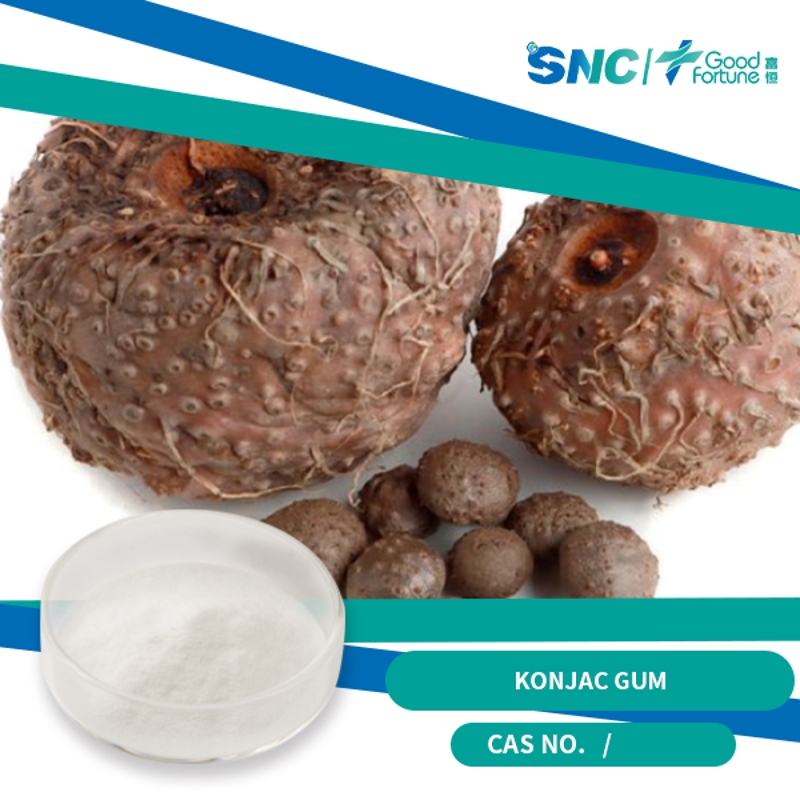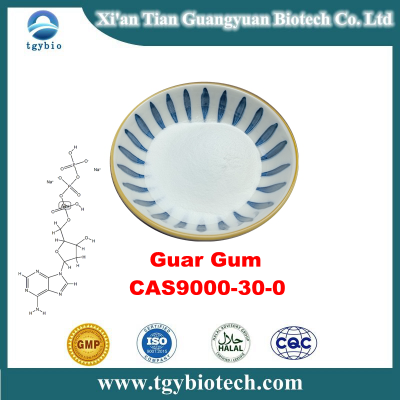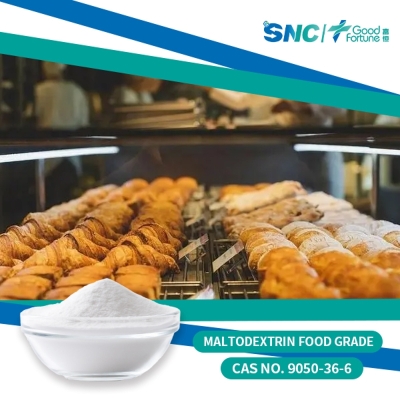-
Categories
-
Pharmaceutical Intermediates
-
Active Pharmaceutical Ingredients
-
Food Additives
- Industrial Coatings
- Agrochemicals
- Dyes and Pigments
- Surfactant
- Flavors and Fragrances
- Chemical Reagents
- Catalyst and Auxiliary
- Natural Products
- Inorganic Chemistry
-
Organic Chemistry
-
Biochemical Engineering
- Analytical Chemistry
-
Cosmetic Ingredient
- Water Treatment Chemical
-
Pharmaceutical Intermediates
Promotion
ECHEMI Mall
Wholesale
Weekly Price
Exhibition
News
-
Trade Service
original title: Application of thickeners in meat processingthickeners are a class of food additives that can improve food viscosity and change their performance. Generally belongs to water-like polymer compounds, can be hydrated to form a high viscosity of the mean phase liquid, often referred to as aqueous solution, hydrogel or edible glue. It can improve the viscosity of food or the formation of adhesive, thereby changing the physical characteristics of food, giving food a moist, suitable taste, and both emulsification, stability or suspension of the role., the application of thickeners has provided a variety of options for the food industry, the combination of various adhesive applications has become one of the processing secrets of many specialty products. The shape, taste and cost of food are all related to the correct selection of thickeners and the optimal combination. Therefore, the study of compound thickeners has become a hot topic in carbohydrate or polysaccharides at home and abroad.Source source: pixabay 1,
thickener useviscosity properties most food thickeners at polarized concentrations or lower concentrations, in line with the fluid properties of Newtonian liquid, at higher concentrations false plasticity. With the increase of food thickener, the viscosity of its solution also increases.Gel Properties When the thickener concentration reaches above the critical concentration of the gel, the aqueous solution is a viscous flowing liquid under warm conditions, but when the temperature decreases, the dispersing medium is all contained in the polymer mesh structure, forming an unflated semi-solid substance called a gel. In thickener gels, the bonding of thickener large molecular bonds only forms a loose three-dimensional network structure.application of 2,
thickeners The application of thickeners should pay attention to the following aspects: 1. Products of different sources or batch numbers of different properties will have slightly different product structures and properties, the same thickener varieties with the increase in average molecular weight, the probability of forming a network structure increases, the viscosity also increases.. 2. Attention should be paid to the effect of thickener concentration on viscosity when using. Generally speaking, the greater the concentration, the increase in the volume of thickener molecules, the increased probability of interaction, the more adsorption of water molecules, the solution viscosity decreased.. 3. Temperature has a great influence on the viscosity of thickeners, and with the increase of temperature, the viscosity of the solution decreases. When the polymer colloid is dissilated, the viscosity reduction is irreversible, in order to avoid irreversible reduction of viscosity, we should try to avoid the colloidal solution for a long time high temperature heat.. 4.pH has a great effect on the stability and viscosity of thickeners. The viscosity of thickeners usually varies with pH. For example, sodium alginate has a stable viscosity at pH 5-10, and when pH is less than 4.5, viscosity increases significantly. Sodium methyl cellulose (CMC) in acidic conditions, the viscosity of rapid decline, so acidic beverages choose CMC as a stabilizer, should choose acid-resistant products.. 5. In order to better select and apply thickeners, several commonly used product performance and application characteristics should be compared separately.Source source: pixabay 3,
kinds of thickeners used in meat products introduction 1. gelatin gelatin is used in animal skin, bone, cartilage, ligaments, muscle membranes and other collagen-rich tissue, after partial hydrolysis to get less than 16%, less than 2% ash, can be used as medicine, can also be used as food industry accessories.gelatin, which appears white or pale yellow, is a translucent, slightly shiny flake or powder grain with a special odor similar to gravy. It is easily broken down by bacteria after moisture. Gelatin is insoluble in cold water, but after watering, it slowly absorbs water and softens, absorbing 5-10 times its own weight. Gelatin dissolves quickly in hot water, forming a solution with viscosity, which cools down into a solid state and becomes a gel. Gelatin is insoluble in organic solvents such as ethanol, ether and chloroform, but it is soluble in acetic acid and glyceric oil.(1) Nutritional role Gelatin's nutritional indicators are higher than lean meat, with which it can replace some lean meat, increase the nutrition of products, reduce production costs.(2) EmulsificationGelatin's main protein component is collagen, its protein hydrophobic base is outward and water binding, water-repose base inward and oil binding, so that many protein molecules are arranged into a single molecular layer membrane, the oil phase decomposed into many small units, in the water phase to form a stable hydrophobic collum, to achieve the purpose of emulsification.(3) Adhesive water preservationGelatin has collusive properties, heated to 70 degrees and dissolved, cooled and then restored to freezing, thus ensuring the elasticity of meat products and water holding play a major role.(4) stabilizing, thickening, geling and other effects in meat processing, gelatin as a glue freezer, such as canned ham, picnic food, mouth and other meat frozen. In addition, as a ham meat roll, used to crush the meat made of products bonding and absorbing juice.Gelatin added in low- and mid-range sausages, small intestines, egg rolls, lunch meat and other canned products, can also be used as the base of artificial meat, such as 10% crude soybean skimmed protein and 10% gelatin for emulsified emulsified emulsified meat, and then replace some lean meat emulsified, not only to ensure the nutrition of the product, but also to solve the problem of less lean meat, poor product elasticity.. 2. Kara gumcara gum is a natural polymer compound, there is no certain molecular weight, the average molecular weight of food grade kara gum is 200,000 Dalton. Cara glue is a odorless, odorless white to tawny powder. With solidification, solubility, stability, viscosity and so on, in the food industry can be used coagulants, thickeners, adhesives and so on.Photo Source: PixabayKala Glue's aqueous solution exhibits three different patterns: the formation of reversible, strong and brittle gels in water; the formation of thermally reversible, weak and elastic gels; thickening and non-forming gels.
application, a particular nature can be obtained by combining the performance required. Cara glue is also stable in neutral and alkaline solutions, even if heated and not hydrolyzed, but in acidic solutions, especially below pH4, it is more likely to occur acid hydrolytic action, so that large molecules hydrolyzed into small molecules, resulting in reduced gel strength and viscosity. The stability of cara glue in gel state is higher than that of solution, and the degree of acid hydrolyzing at room temperature is smaller than that of dissolved state.use of caramerogel in meat products is simply to integrate carame into saline water, with the help of saline syringes and massage processing, so that it and saline solution into the tissue. The general recommended use is 0.1%-0.6% of the finished product weight, the appropriate amount depends on the amount and type of phosphoric acid used, meat quality, expected weight gain, etc., can greatly reduce the loss of cooking, improve product yield, improve the toughness, molding and slicing of meat products, while not affecting the color, aroma, taste of meat products.studies have shown that adding 0.25% caramel and no more than 0.4% phosphate to smoked intestines can improve sausage texture and water preservation. After adding carame glue to the marinated meat products, the cooking loss was 2.6%-6.5%. In the ham sausage meat products to add 0.4% of the cara glue, while the phosphate and salt mixed use, the product rate can be greater than 130%, fat utilization can be increased by 5% - 7%, and can get a reasonable product texture, add cara glue products tender, good bonding, stress deformation, good elasticity. Cara glue can not only improve the product yield of meat products, improve the utilization rate of fat, improve the quality of production, improve the economic efficiency of products, but also reduce the water efficiency of products, extend the shelf life of products, improve product commodity.. 3. Huangyuan gumwas composed of D-glucose, D-glucosamine, D-glucodehyde acid, acetic acid and acetone acid composed of a five-sugar repeating unit structure polymerization ring.yellow raw gum can be widely used in a variety of meat processing, can significantly improve the tenderness, color and flavor of meat products, while improving the water holding of meat products, thereby improving the yield. The other side ham, round ham these meat products need to be marinated, generally after the marinating is finished to add 1% pre-prepared yellow original glue solution, and then add other accessories, stirring evenly after the can or into the intestines. For lunch meat, red intestine and other meat products in the chopping meat, can be directly prepared yellow original glue solution poured into the blender, and then add starch and other accessories, the amount of yellow raw gum 0.1%-0.3%.source: Food Forum netizens reprinted share
responsible editor:
.







